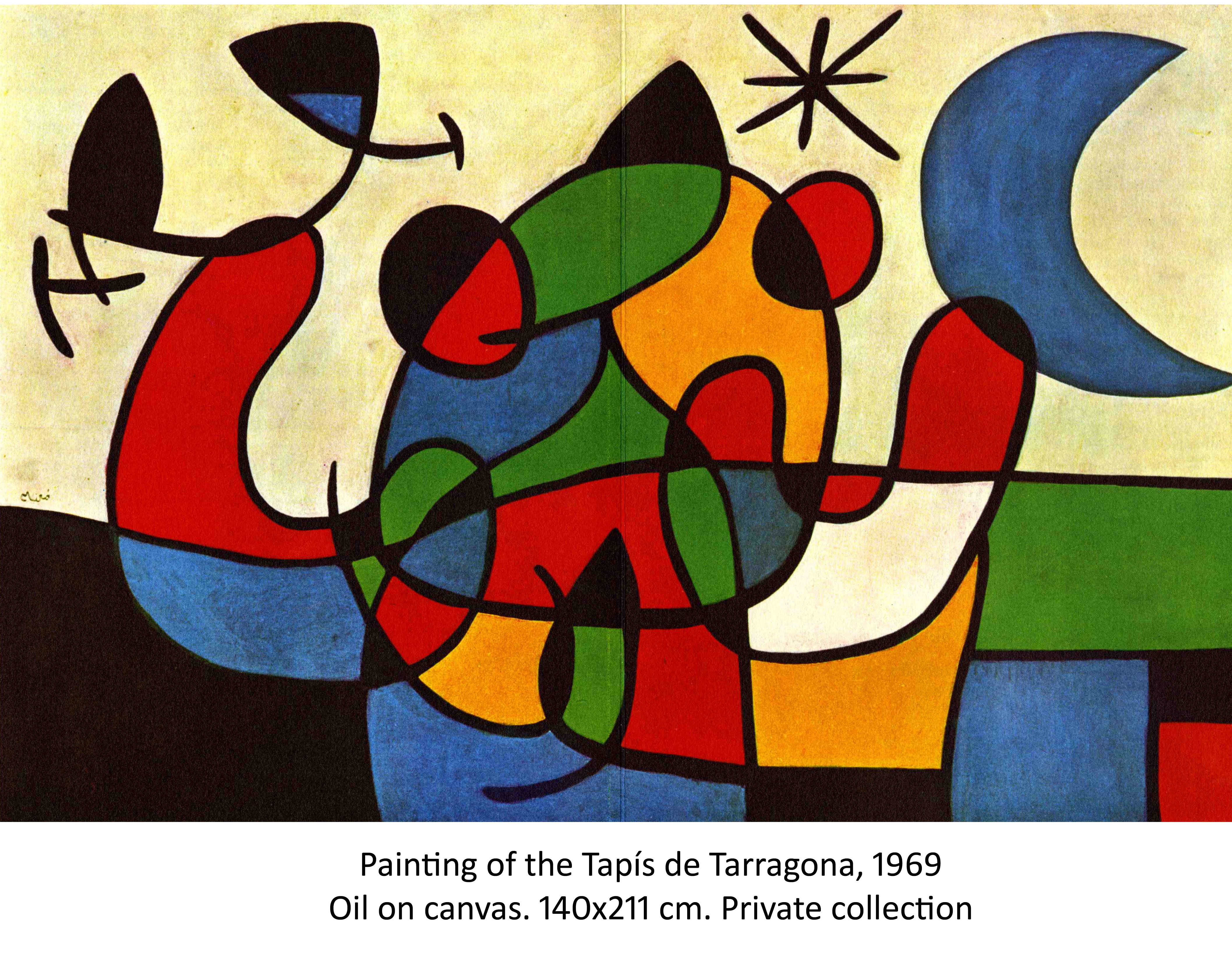El Tapís de Tarragona
The Tarragona Tapestry
The first work by Joan Miró in the textile medium is directly related to the famous Tapís de Tarragona, started in 1969 in collaboration with Josep Royo.
In 1966, Maria Dolors, the artist’s daughter, suffered a serious traffic accident in Mont-roig on a level crossing on the outskirts of Mont-roig del Camp. After being transferred to the Monegal Clinic of Tarragona, she was cared for until she recovered by Dr. Rafael Orozco and his medical team.
In 1970, in appreciation for the care she received, Miró donated this tapestry to the Red Cross Hospital in Tarragona, which was managed by Dr. Rafael Orozco at that time.
Joan Miró named the work Tapís de Tarragona, and took on the young artist Josep Royo, who had worked on the restoration of the Aymat Tapestry Workshop in Sant Cugat del Vallès, which later become known as the Catalan School of Tapestry, where he produced his first tapestry.
This project was the start of a collaboration between Joan Miró and Josep Royo, which led them to look for new premises to produce their joint works, for example, the emblematic Tarragona flour mill, La Farinera, where works of major importance for many artists would be created.
 The Tapís de Tarragona, produced in wool and hemp from the original painting by Joan Miró, is a monumental work measuring 2.80 x 4.20 m., which combines plasticity, texture and colour to perfection. This initial tapestry was produced according to an experimental technique which Miró developed with Josep Royo, in which wools of different thicknesses and knots in hair shape a work which combines the straight lines and curves with more genuine colours and graphic designs of the most recent Miró.
The Tapís de Tarragona, produced in wool and hemp from the original painting by Joan Miró, is a monumental work measuring 2.80 x 4.20 m., which combines plasticity, texture and colour to perfection. This initial tapestry was produced according to an experimental technique which Miró developed with Josep Royo, in which wools of different thicknesses and knots in hair shape a work which combines the straight lines and curves with more genuine colours and graphic designs of the most recent Miró.

The production by Miró features a vocabulary which designates aspects of the universe interpreted by Miró and subjected to an elementary reduction. In the Tapís de Tarragona, Miró draws a line for the horizon and over it a female figure with her arms outstretched towards the sky, with one hand touching the moon, while the other is holding an abstract figure representing a bird.
Another key feature in his work is the star. Formed by four lines which intersect at the centre, it is reminiscent of the shadows projected on the land by the canes that support tomato plants, commonly found in all vegetable gardens and which Joan Miró was certainly familiar with from his stays at his family’s country estate in Mont-roig del Camp.
All the elements that make up his composition in the form of puzzles, are figures with bright colours with black outlines that further accentuate the vivaciousness of the colours. This use of contrasting pure colours reveals a certain childhood recollection of the artist, which in turn is mitigated by the precise execution of the forms.
